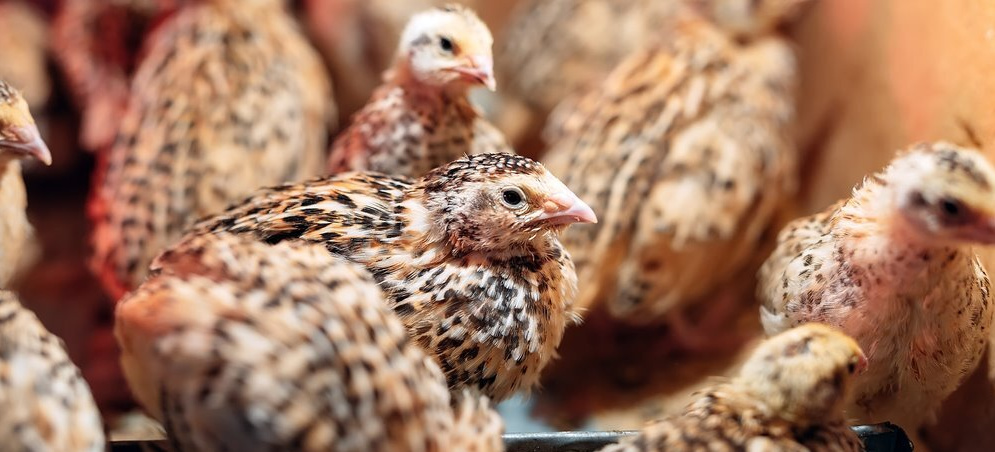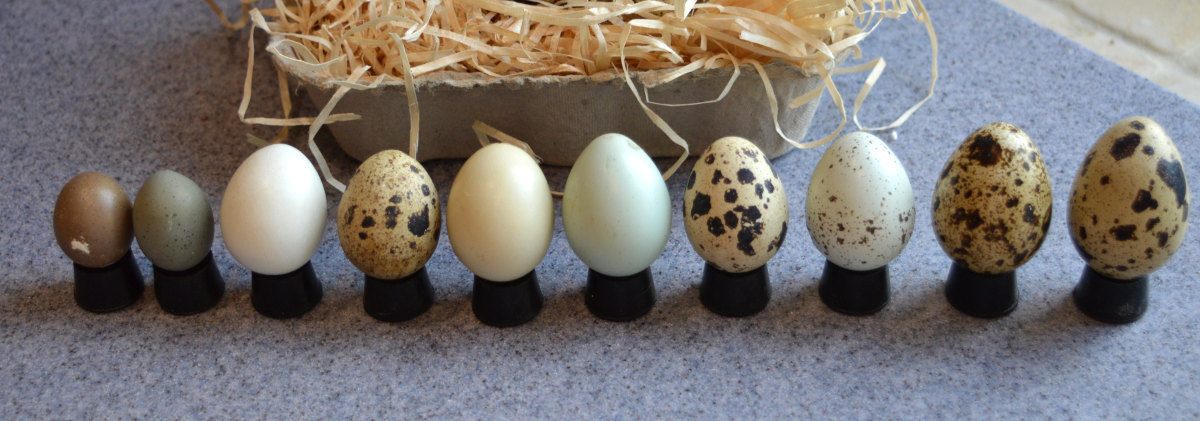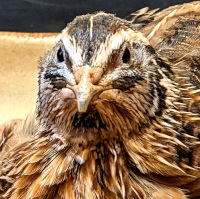All about quail. An overview of quail keeping.

Table of Contents
Classification of Quail:
If we 'place' quail in their relative position in the bird world, they are found in the order of Galliformes. This is a group that includes game birds and domestic fowl, but not waterfowl. Narrowing the classification further, it is a member of the Phasiandae family, a category it shares with pheasants and partridges.
Class: AVES (Birds)
Order. GALLIFORMES (Game birds and Fowl)
Family: PHASIANIDAE (Pheasants, Partridges and Quail)
Genus: Quail
There are 13 different genera as follows:
- Anurophasis
- Callipepla
- Colinus
- Cotumix
- Cyrtonyx
- Dactylortyx
- Dendrortyx
- Odontophorus
- Ophrysia
- Oreortyx
- Perdicula
- Philortyx
- Rhynchortyx
Which types of quail are kept for food and eggs?
The most widely kept quail are the Coturnix laying varieties, some of the Colinus group, such as the Bobwhite, and the small aviary Chinese Painted quail which is also a member of the Coturnix genus.
Most quails are birds of the undergrowth which, depending on the area, may be tall grasses, dense bush, shrub thickets, overgrown fields, mead-OWH, plantations or savannas.
Below: There are many sizes and types of quail egg.

They are essentially shy, retiring birds which will 'quail' with fear into the shadow and security of the undergrowth. They stand motionless. When really disturbed however, they will break cover like pheasants, flying straight up in the air with a characteristic whirring of wings.
Feathers and camouflage:
Most are ground-orientated in that they spend most of their time on the ground in the wild, except when they are migrating or disturbed in some way. Some are more ground orientated than others.
The Chinese Painted, for example, is like a small mouse scuttling about on the ground, resorting to occasional short flights where necessary. The Bobwhite, by comparison, likes to fly and perch, and does not scratch as much as Coturnix. It is important, therefore, to make provision for such behaviour within an aviary.
The quails beak:
The quail's beak is long, pointed and sharp, ideally suited for pecking small insects and grains, or for shredding small pieces of vegetation. It can also be an aggressive weapon if one quail decides to attack another.
In the wild, the beak is kept relatively short by access to a range of natural materials. In captivity it is a good idea to provide a dried cuttlefish bone for this purpose, as is commonly done for canaries and budgerigars. Most pet shops sell it. Make sure that it is positioned firmly so that there is adequate friction when the beak is rubbed against it.
How noisy are quail?
As with all things, only a relative answer is possible. As a generalisation, males are noisier than females which confine themselves to subdued little chirrups and soft 'tic-tics' or cooings. The male Coturnix has a rasping chirrupping crow, rather like the harsh cry of the magpie, and is altogether louder and more penetrating. Traditionally, this has been described as sounding like 'wet-my-lips' or 'wet-my-feet'.
The Bobwhite male is also loud, but I do not find his call as aggravating as that of the Coturnix. It is basically a three-note, full-bodied piping, whistling sound. The female has a quieter version of the same call, with more of a tendency to chirrup.
The Chinese Painted male has a melodious, rather wistful piping whistle. It is almost minor-key, with an evocative atmosphere of the jungle in it. The female is quiet, apart from the occasional and busy 'chic-chic' as she darts about looking for insects.
Preening:
Like all birds, quails will preen themselves regularly, often standing in a patch of sunlight to do so. This ritual of cleaning the feathers with the beak also allows a certain amount of waterproofing to take place. It is also a sign that the bird is healthy.
Below: A quail preening its feathers.
A quail which does not preen itself, but has a tendency to stand, looking morose, should be checked, because it is a sign that all is not well. Quail are masters of the dust bath and should be given the opportunity to do so.
Quail size:
Quail vary in size, from the largest Longtailed Tree quail, Dendrortyx macroura, at 36 cm (14 in), to the smallest Chinese Painted quail, Coturnix coturnix chinensis at 12 cm (4.5 in). They are found in a wide range of climates, but all share similar characteristics of being shy, quick and with a tendency to hide in ground cover such as long grass or other vegetation.
Quail life span:
There is little information available on this aspect, but Altman and Ditmer, in their report, Growth including Reproduction and Morphological Development, 1962 (USA), say that the record life span of a Coturnix quail is ten years. Commercially, it is between 1-2 years.
Fighting among quails:
As a general rule, males should be kept separate to avoid fighting and interbreeding, but on a small scale, where there is less pressure of numbers and general stress, they may live together quite happily without fighting.
The males will fight to the extent that they cause considerable damage. In some intensive units, quails are beak trimmed; the upper beak is trimmed back so that it is shorter than the lower one, but I find such a practice repugnant. Another practice, more common in the USA than in Britain, is to use beak rings. These are open rings which have the ends inserted into the nostrils and then pinched together with pliers. Again, I abhor such a practice.
Taming quail:
On a small scale birds do become tame. I frequently allowed up to seven different males to share the same aviary and run in the summer, with occasional browsing periods on grass in a movable run. In winter, they were housed in canary or parrot breeding cages in the conservatory, but were frequently released to enjoy the freedom of the conservatory.
I did not let the breeds interbreed, of course. When I wanted to collect eggs for incubation purposes, I confined the male and females of a particular breed together and kept them separate from the others until I could be sure that the eggs were pure.
I must emphasise that my birds were probably demonstrating behaviour different from the norm, because they were so tame. On sunny winter days, I often worked at a table in the conservatory. One or more of the quail would fly up and see what I was up to, often settling down and going to sleep a few inches away.
As a matter of interest, there is an American book called That Quail Robert by Margaret Stranger which is a fascinating account of how the author tamed a Bobwhite quail.
